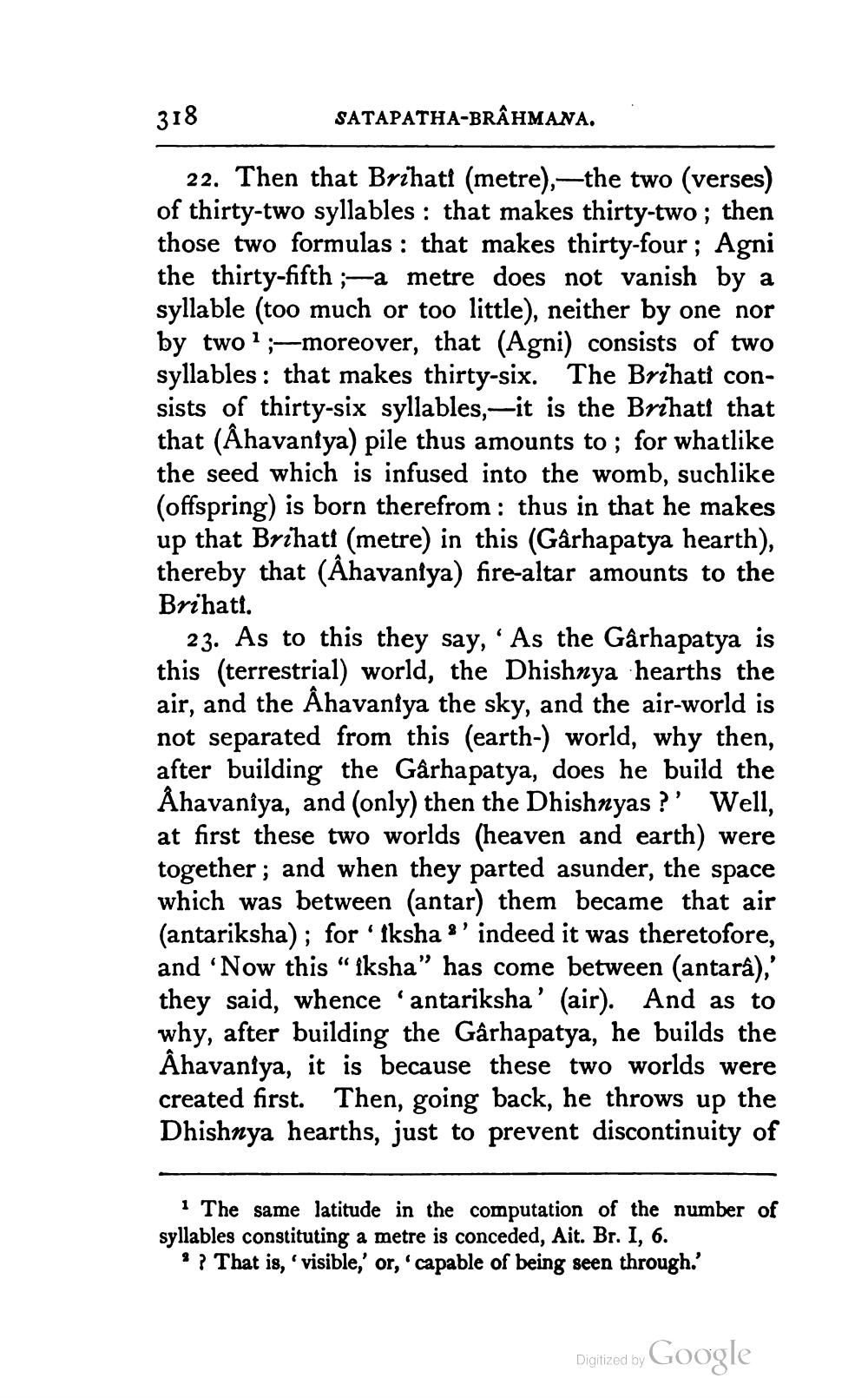________________
318
SATAPATHA-BRAHMANA.
22. Then that Brihati (metre),—the two (verses) of thirty-two syllables : that makes thirty-two; then those two formulas : that makes thirty-four ; Agni the thirty-fifth ;-a metre does not vanish by a syllable (too much or too little), neither by one nor by two ? ;-moreover, that (Agni) consists of two syllables: that makes thirty-six. The Brihati consists of thirty-six syllables,-it is the Brihati that that (Ahavaniya) pile thus amounts to; for whatlike the seed which is infused into the womb, suchlike (offspring) is born therefrom : thus in that he makes up that Brihati (metre) in this (Garhapatya hearth), thereby that (Ahavaniya) fire-altar amounts to the Brihati.
23. As to this they say, 'As the Gârhapatya is this (terrestrial) world, the Dhishnya hearths the air, and the Ahavaniya the sky, and the air-world is not separated from this (earth-) world, why then, after building the Gârhapatya, does he build the Ahavaniya, and (only) then the Dhishnyas ?' Well, at first these two worlds (heaven and earth) were together; and when they parted asunder, the space which was between (antar) them became that air (antariksha); for fksha : ' indeed it was theretofore, and 'Now this "iksha" has come between (antara),' they said, whence 'antariksha' (air). And as to why, after building the Gârhapatya, he builds the Ahavaniya, it is because these two worlds were created first. Then, going back, he throws up the Dhishnya hearths, just to prevent discontinuity of
1 The same latitude in the computation of the number of syllables constituting a metre is conceded, Ait. Br. I, 6.
? That is, 'visible,' or, capable of being seen through.'
Digitized by Google




